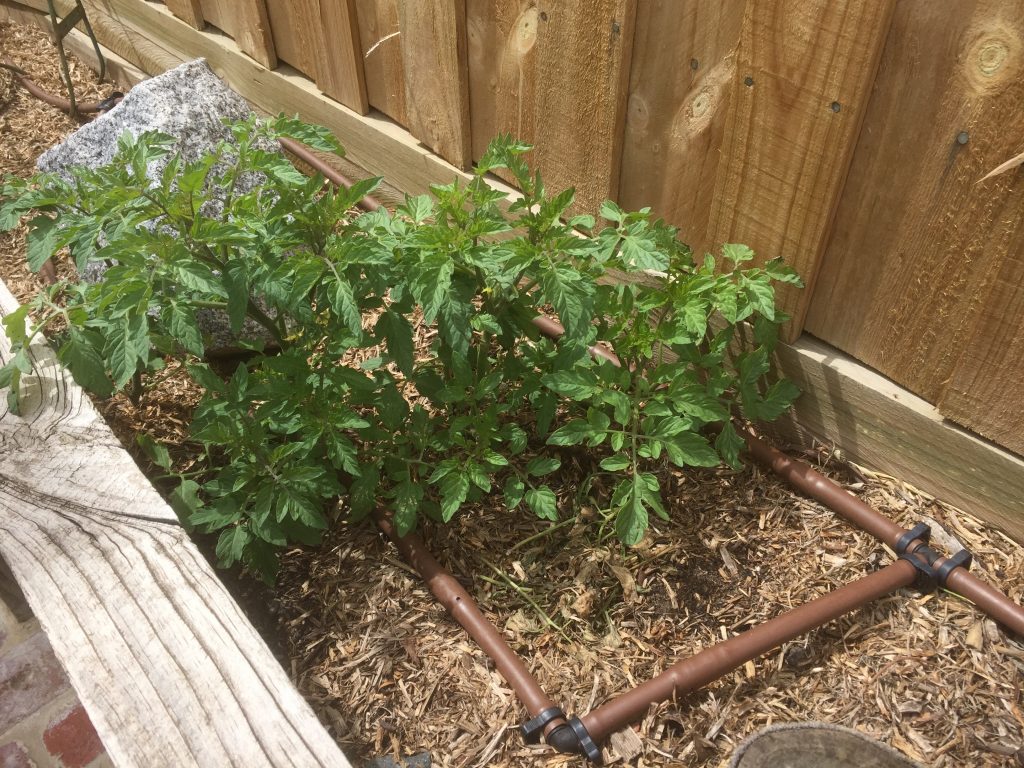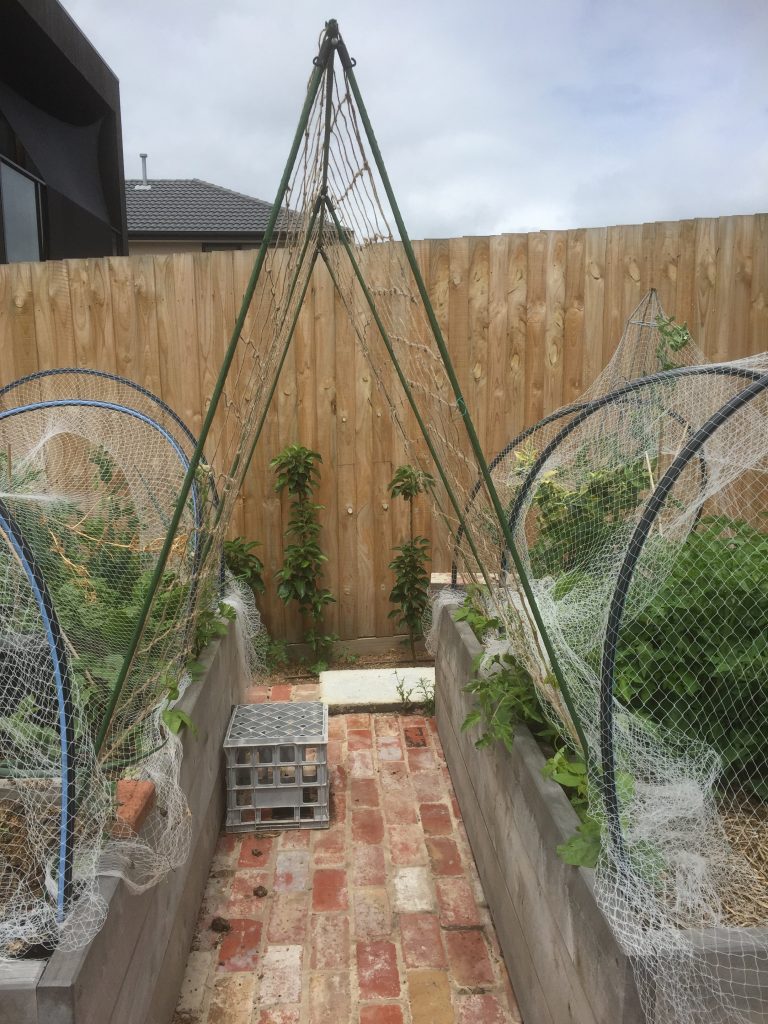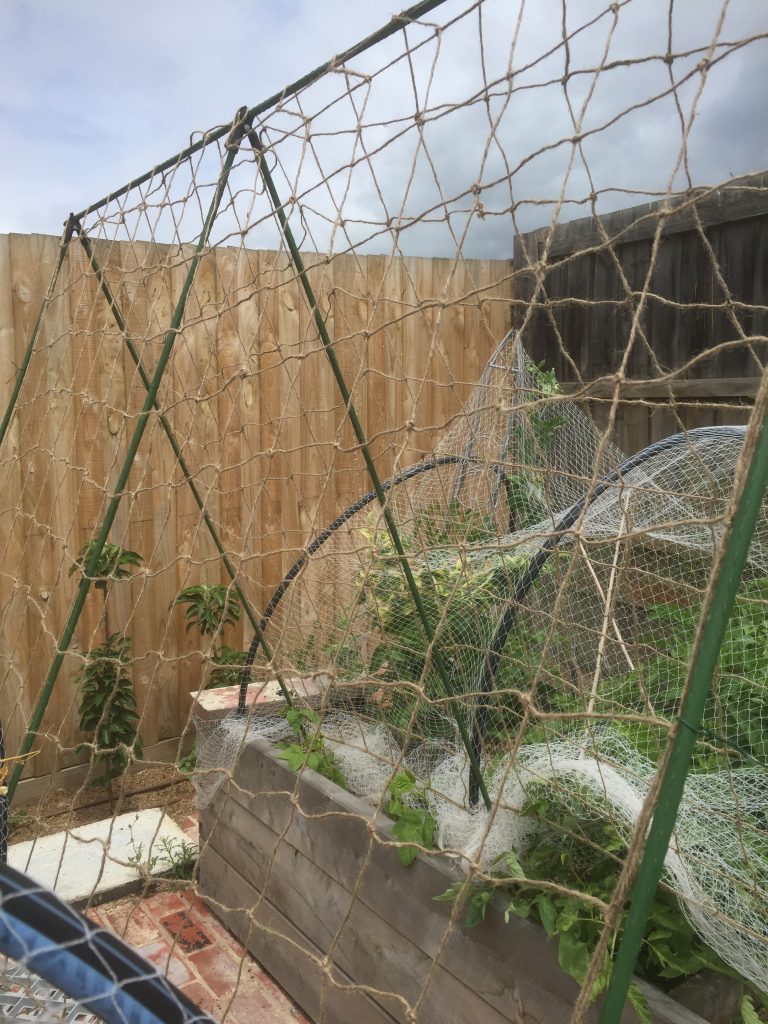
Like investing or working towards financial independence, gardening is a process of doing little jobs, one after the other. These jobs are nothing momentous when viewed on their own, but over time the cumulative effect can be huge.
The good thing about a little project is that it doesn’t take much to gain success. I just finished one on Sunday, out in the garden, and it made my day.

Last year I was wandering around Bunnings in the gardening section and I saw a plastic frame to grow beans/cucumbers or whatever. It came with a thin plastic bird netting to throw over it. I thought it’d be perfect to use for the Purple King beans that Bev gave me in 2012.
I set it up and yes, it worked pretty well. This was the first year that my veggie garden was operational and I had yet to realise how poor the soil that the landscaper had used was. Pretty much the only things that grew last year were beans and zucchini.

At the end of the season the netting was full of holes. Actually, that’s a stupid sentence to write because, by definition, netting is already full of holes! But this netting was so delicate that it was ripped to shreds. I packed away the frame, thinking vaguely that next year I’d cut down some more bird netting or something to use with it. Maybe even position it in a couple of the wicking beds so it’d form an arch???

Fast forward to this year. I was wasting time online, looking at the Diggers site when I saw brown string being used as netting. OMG!!! It was marketed as being compostable, so you just tear it down at the end of the growing season and whack it in the compost, but you and I both know that’s not going to happen in the Frogdancer Jones household! I’ll get at least 2 growing seasons out of it at least. You mark my words.
I didn’t know whether I’d need one or two of them to fit the frame, but they were only $9 each, so I ordered 4. I figured that I’d be able to use them somehow. While I was waiting for them to come in the mail, I dragged the frame out of the shed and set it up over the middle path between the two wicking beds, then planted some Lazy Housewife beans I’d saved from my crop last year. I figured they’d get a week or so to grow before they’d reach the netting.
I had a vision in my head of a green arch over the path, with beans hanging down ripe for the picking. The shade of the arch would shelter at least 2 worm farms in the wicking beds and the path itself would be a shady spot. In the middle of summer those brick paths can get hot. The bean archway would be functional as well as pretty.

Sometimes in gardening, along with investing, you find that you can do things by yourself that you didn’t think you could. Learn about shares? Compound interest – what’s that? How do I invest? There are numbers involved and numbers are scary; surely I’ll have to hire someone???
Can I put this netting over this very tall frame? Surely I’ll need help from a tallish son?

But no! I was able to do it all by myself. Some of the beans had grown tall enough for me to thread them through the lower parts of the netting, so the project is already underway. I stepped back after setting it all up and felt proud.
I was reading on Rhonda’s blog about how nice the white cucumbers are, so when I saw a punnet of them I brought one home. Ryan24 loves cucumbers and the twine netting is certainly strong enough to support them, so if they take off they’ll be a handy addition to the garden. The mixture of beans and cucumbers would also make for a more interesting view, too.
When I look at the little steps it took to see this little project through from start to finish, I feel pleased that I took those steps. It’s the same feeling I get when I log into my Superannuation account to see how it’s going, or into my Commsec account to cast a quick look over my shares. I feel glad that I started the journey to financial independence all those years ago.
Sometimes things in both gardening and investing don’t go to plan. The sharemarket may fall or a landscaper may put in awful soil that kills the plants you put in. But if you quietly keep putting in the little steps… slowly and steadily making compost to nourish the soil/saving a certain amount each pay/salary sacrificing towards Super/ buying an ETF every time your savings reach a coupla grand…

… you’ll be able to look back over time and marvel at just how far you’ve come.
Love it all Frogdancer!
Ooh, very nice! Well done on creating those structures. You’re right that planting a garden has similar pitfalls to investing. I’m equally mediocre at both, but I manage nonetheless.
A step at a time… it’s learning something and then building on the learning.
We’ll all get there in the end!